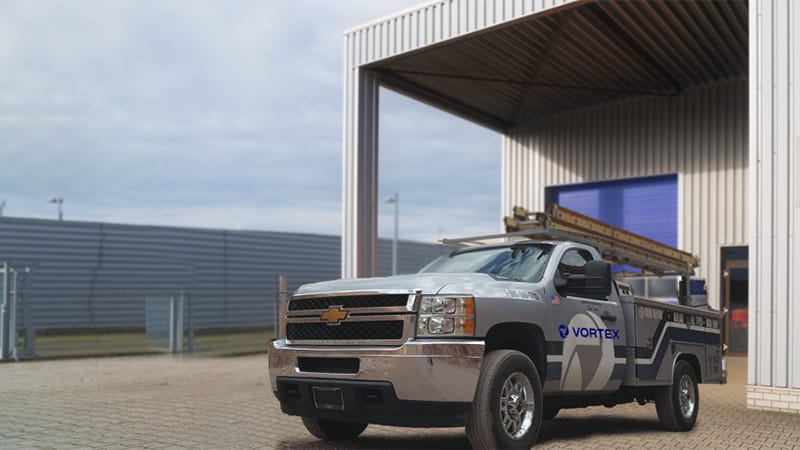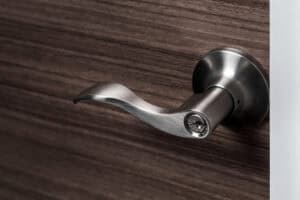How to Fix a Door That Won’t Latch
 A door that won’t latch shut not only interferes with your ability to conduct business in private. It can also prevent you from controlling access to sensitive and restricted areas, thereby undermining your security. While it’s rarely practical for business owners or property managers to handle the problem on their own, understanding how to fix a door that won’t latch will help them decide whether the problem requires a simple repair or a professional upgrade, and budget accordingly. To help you understand the potential issues you might encounter with your door latch, here is a step-by-step walkthrough of the troubleshooting process.
A door that won’t latch shut not only interferes with your ability to conduct business in private. It can also prevent you from controlling access to sensitive and restricted areas, thereby undermining your security. While it’s rarely practical for business owners or property managers to handle the problem on their own, understanding how to fix a door that won’t latch will help them decide whether the problem requires a simple repair or a professional upgrade, and budget accordingly. To help you understand the potential issues you might encounter with your door latch, here is a step-by-step walkthrough of the troubleshooting process.
Inspection
Whether you’re experiencing problems with exterior doors or interior doors, there are three reasons why a latch might malfunction.
- The latch won’t activate.
- The latch bolt isn’t aligned with the strike plate hole.
- The door isn’t aligned with the frame.
If the door latch is stuck, it’s generally because the bolt mechanism has become clogged with dirt, dust, and grime. If the bolt doesn’t align with the latch hole, it may have been improperly installed. Or it may be due to weak hinges and a sagging door. As buildings settle, it’s not uncommon for door frames to shift, creating a misalignment that prevents doors from latching shut. Once the repairman has identified the problem, they’ll likely recommend one of the following solutions.
Clean the Locking Mechanism
Cleaning and lubricating a stuck latch will generally resolve the issue. Depending on the scope of the problem, the technician may have to dismantle the door handle in order to remove buildup around the deadbolt and internal mechanisms. In some circumstances, they might have to clean the striker plate as well. Debris often becomes trapped there, preventing the latch from engaging fully.
Tighten the Hinges
Loose hinges are another easy fix. This problem may occur for several reasons, including:
- Wear and Tear. Screws and pins often loosen over time due to stress from repeated movement. Vibration from wind or heavy machinery may also cause the screws to back out.
- Poor Installation. If the door hinges weren’t properly tightened when they were installed, then they’re likely to become even looser over time.
- Wood Expansion or Shrinkage. Humidity and temperature changes can cause doors to expand and contract, gradually loosening the screws that hold them in place.
- Overloading. If the door is too heavy or if the door’s weight isn’t evenly distributed, then the hinges may slowly come loose.
- Corrosion. Rust weakens screws, making it hard for them to maintain a strong grip on the door.
Generally, tightening the hinge with a screwdriver is all it takes to resolve the issue. However, if the screws have become worn or corroded, the hinges may need to be replaced entirely. Occasionally, the screw holes may be stripped, meaning the threads inside them are damaged and can no longer hold the screws in place. (This normally happens when too much force is applied to the screw.) If this is the case, the technician will fill the old screw holes with wood filler and reinforce the hinge with a longer screw.
Shim the Hinges
Over time, the mortise (the cutout section in the door jamb where the hinge leaf is mounted) can sink, creating a gap between the door latch and the strike plate. Under these circumstances, the service tech will often remove the hinge and insert a thin piece of metal or plastic (a shim) into the mortise to help lift it into its proper position. Metal shims are used for fire-rated doorways. Plastic is used for non fire-rated doorways.
To close a gap on the lock side of the door, technicians place shims near the barrel of the hinge, which pushes the door towards the lock. Conversely, placing a shim near the edge of the hinge plate, away from the barrel, pulls the door towards the hinge side of the door.
Often technicians will combine these techniques, placing shims to pull the top hinge and push the bottom hinge, or vice versa, in order to realign the door.
Sand the Jambs
In humid environments, the door jamb may bulge or become warped. When this happens, the door rubs against the jamb as you open it. Grinding down the jamb with a sander will relieve the pressure, allowing the door to open and close smoothly. Installing a metal door frame shields wooden components from moisture, reducing the likelihood of these types of problems.
Enlarge the Strike Plate Hole
Depending on how far the latch is from the strike plate, it may be possible to widen the striker hole until the latch has enough room to lock into place. Generally, this is only possible if the latch is missing the hole by less than an eighth of an inch.
Reposition the Strike Plate
If the latch is missing the hole by more than an eighth of an inch, the technician may decide to move the strike plate so it aligns with the door latch. After marking the spot the latch hits when the door closes, the service tech will remove the strike plate and fill the existing screw holes with wood filler. Once it’s set, the service tech will either enlarge the existing mortise with a chisel, if only minor adjustments are needed, or drill a new one. Then they’ll reattach the strike plate and test the door by opening and closing it all the way, to ensure it sits flush with the frame.
Vortex Door Repair
One of the leading reasons why doors won’t latch is lack of maintenance. Doors should be inspected and serviced at least once a year, in order to identify and repair issues that could prevent them from functioning. Vortex service teams are experts on all types of door locks, from simple deadbolts to electronic keypads and biometric scanners. Our maintenance programs keep doors working properly in order to ensure your building remains both secure and accessible. Contact us to schedule your appointment today!










